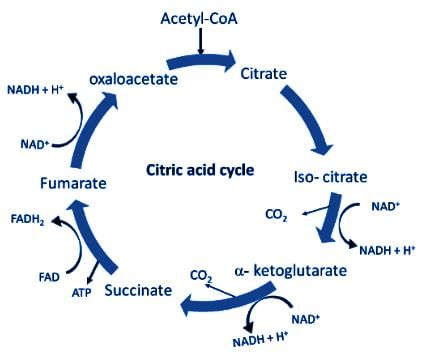NEET Exam > NEET Tests > Test: Krebs Cycle (Aerobic Respiration) - NEET MCQ
Test: Krebs Cycle (Aerobic Respiration) - NEET MCQ
Test Description
10 Questions MCQ Test - Test: Krebs Cycle (Aerobic Respiration)
Test: Krebs Cycle (Aerobic Respiration) for NEET 2025 is part of NEET preparation. The Test: Krebs Cycle (Aerobic Respiration) questions and answers have been prepared
according to the NEET exam syllabus.The Test: Krebs Cycle (Aerobic Respiration) MCQs are made for NEET 2025 Exam.
Find important definitions, questions, notes, meanings, examples, exercises, MCQs and online tests for Test: Krebs Cycle (Aerobic Respiration) below.
Solutions of Test: Krebs Cycle (Aerobic Respiration) questions in English are available as part of our course for NEET & Test: Krebs Cycle (Aerobic Respiration) solutions in
Hindi for NEET course.
Download more important topics, notes, lectures and mock test series for NEET Exam by signing up for free. Attempt Test: Krebs Cycle (Aerobic Respiration) | 10 questions in 10 minutes | Mock test for NEET preparation | Free important questions MCQ to study for NEET Exam | Download free PDF with solutions
Test: Krebs Cycle (Aerobic Respiration) - Question 1
Mitochondria are called the powerhouses of the cell. Which of the following observations support this statement?
Detailed Solution for Test: Krebs Cycle (Aerobic Respiration) - Question 1
Test: Krebs Cycle (Aerobic Respiration) - Question 2
In one Krebs’ cycle, decarboxylation takes place at _______ steps.
Detailed Solution for Test: Krebs Cycle (Aerobic Respiration) - Question 2
Detailed Solution for Test: Krebs Cycle (Aerobic Respiration) - Question 3
Test: Krebs Cycle (Aerobic Respiration) - Question 4
In which of the following do the two names refer to one and the same thing?
Detailed Solution for Test: Krebs Cycle (Aerobic Respiration) - Question 4
Test: Krebs Cycle (Aerobic Respiration) - Question 5
Pyruvic acid, the key product of glycolysis, can have many metabolic fates. Under aerobic conditions, it forms
Detailed Solution for Test: Krebs Cycle (Aerobic Respiration) - Question 5
Test: Krebs Cycle (Aerobic Respiration) - Question 6
End-product of citric acid/Krebs cycle is
Detailed Solution for Test: Krebs Cycle (Aerobic Respiration) - Question 6
Detailed Solution for Test: Krebs Cycle (Aerobic Respiration) - Question 7
Test: Krebs Cycle (Aerobic Respiration) - Question 8
Which of the following is the key intermediate compound linking glycolysis to the Krebs cycle?
Detailed Solution for Test: Krebs Cycle (Aerobic Respiration) - Question 8
Test: Krebs Cycle (Aerobic Respiration) - Question 9
Which of the following is not correct about the Krebs cycle?
Detailed Solution for Test: Krebs Cycle (Aerobic Respiration) - Question 9
Test: Krebs Cycle (Aerobic Respiration) - Question 10
Most of the enzymes of the TCA cycle are present in
Detailed Solution for Test: Krebs Cycle (Aerobic Respiration) - Question 10
Information about Test: Krebs Cycle (Aerobic Respiration) Page
In this test you can find the Exam questions for Test: Krebs Cycle (Aerobic Respiration) solved & explained in the simplest way possible.
Besides giving Questions and answers for Test: Krebs Cycle (Aerobic Respiration), EduRev gives you an ample number of Online tests for practice
Download as PDF















